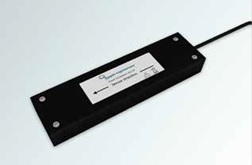Measurement of Magnetic Fields
Magnetic stray fields can be characterized with different sensor principles. These include the Hall effect, magneto-resistive methods (AMR, GMR, TMR) and the fluxgate principle. The various sensors cover different sensitivity and measuring ranges.
- With the Hall effect, a voltage can be detected caused by electron displacement in the sensor element, depending on the external magnetic field to be measured.
- The principle of magneto-resistive processes is based on the effect of the change of resistance in a material, caused by the application of an external magnetic field.
- In a fluxgate probe, a core is driven periodically into magnetic saturation; an external magnetic field results in an asymmetrical voltage curve.
The sensors used in our magnetic field devices are developed and produced by industrial and research partners. Our own high precision electronics for controlling and evaluating the sensors, enable us to apply the sensors in a device specific way. The sensors are used as single elements or in array arrangements. Thus, different measurement requirements (local measurement, fast scans, high frequency measurements etc.) can be realized.
In the in-house calibration laboratory, an E-Magnet and a three-axis Helmholtz coil are available for calibrating the developed sensor devices, to meet precise measurement requirements.
Application examples:
- Reference measurements during calibration
- Determination of the properties of permanent magnets and permanent magnet arrangements
- Detection of moving metallic objects
- Measurements (of inhomogeneities) of the earth's magnetic field
- Interference field measurement






